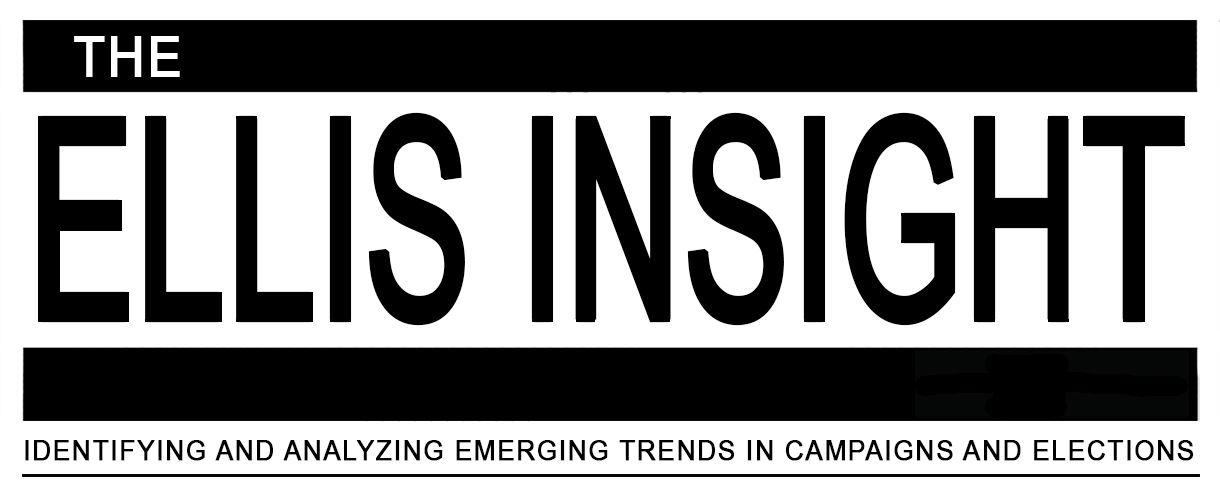By Jim Ellis — Friday, Feb. 2, 2024
President

Will Robert F. Kennedy Jr., currently running as an Independent general election candidate, switch to the Libertarian Party?
First, being the Libertarian Party nominee would give Kennedy ballot access in all 50 states, something that is difficult for any Independent to obtain. The Libertarian Party was the only non-Democratic or Republican entity to achieve universal ballot status in 2020 (Libertarian nominee Jo Jorgensen appeared on the Libertarian line in 48 states and the District of Columbia; in Alabama and Tennessee, she appeared as an Independent), and they again would with Kennedy as their nominee.
Additionally, featuring RFK Jr. as their candidate, it is highly likely that the Libertarian Party would attract its highest historical number of votes. This is important for the organization’s future because many states base future party status upon performance in the national election.
Morning Consult/Bloomberg/Quinnipiac Polls: Any Given Poll — It’s a common saying in the NFL that “on any given Sunday any team can beat another.” A similar phrase appears applicable in political polling, as well. On almost any given day, we can find polls that disagree over outcome even though conducted during the same time period. Wednesday’s Morning Consult/Bloomberg News and Quinnipiac University are good examples.
The day began with Morning Consult/Bloomberg releasing their new regional survey series (Jan. 16-22; 4,596 registered voters in Arizona, Georgia, Michigan, Nevada, North Carolina, Pennsylvania, and Wisconsin; online; part of regular tracking), which finds former President Donald Trump leading in all of the key swing states with margins between three (Arizona, Pennsylvania) at 10 percentage points (North Carolina). Georgia, Michigan, and Wisconsin each posted five-point Trump margins, while Georgia and Nevada were closer to the North Carolina number at plus-eight. Turning to their national track, MC/Bloomberg posted Trump to a two-point advantage over President Joe Biden in the head-to-head ballot test.
Yet in the Quinnipiac University release, a poll that was in the field within a similar same time frame as MC/Bloomberg, though earlier in January (Jan. 4-8; 1,680 US registered voters; live interview), President Biden posted his biggest national popular vote lead of any recent poll, 50-44 percent. When the Independent and minor party candidates were added in, such as RFK Jr., for example, the Biden edge shrinks to just two percentage points, which is much more in line with other pollsters.
Senate
Maryland: Rep. Trone Expands Lead — A new internal Hickman Analytics poll for the David Trone for Senate campaign (Jan. 18-24; 1,500 likely Maryland Democratic primary voters; live interview) sees Trone, the 6th District Congressman, leading Prince Georges County Executive Angela Alsobrooks by a 45-34 percent margin in the open Democratic US Senate primary. The question, however, is for how long? The poll contained an over-sample of African Americans and females to emphasize the groups with which Rep. Trone is weakest.
Though the early numbers look good for the congressman, it must be understood that his campaign has spent well over $15 million to date, and $7 million alone just since November according to the Inside Elections publication. Trone began advertising a year before the primary election.
The Alsobrooks campaign has yet to run an ad. Since it is clear that she cannot match the congressman in an ad war with him self-financing the race from his huge personal wealth, the Alsobrooks strategists are waiting until late in the contest to unleash their own ad buys. She will be competitive as we get closer to the May 14th primary, so despite Trone’s polling and resource lead, this primary battle is far from over.
House
NY-3: Special Election Ad Spending Update — The Daily Kos Elections and AdImpact organizations charted the spending in the special congressional election to replace expelled Rep. George Santos (R-Long Island) as we approach the Feb. 13 election. According to their data, the overall Democratic operation is outspending the encompassing Republican effort by a large amount, $9.6 million to $5.7 million. The two candidates are former US Rep. Tom Suozzi for the Democrats, and Nassau County Legislator Mazi Melesa Pilip for the GOP.
The Congressional Leadership Fund, however, is coming in late to help even the score. They have reserved $2.6 million in television and digital ads to bring the final days spending into parity. In terms of spending booked for the final two weeks, the Democratic advantage narrows to $2.8 to $2.44 million.






